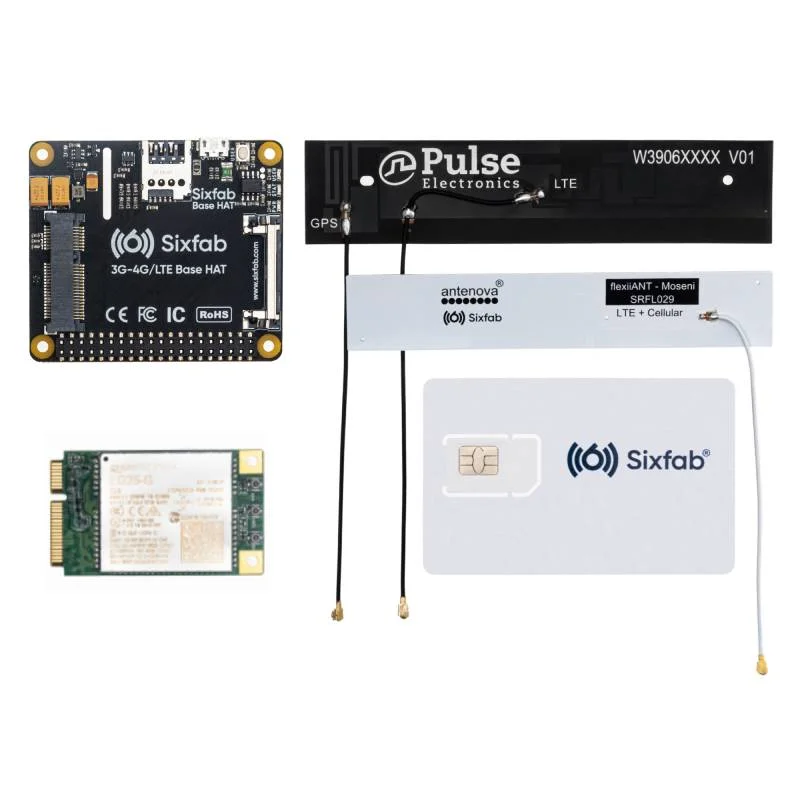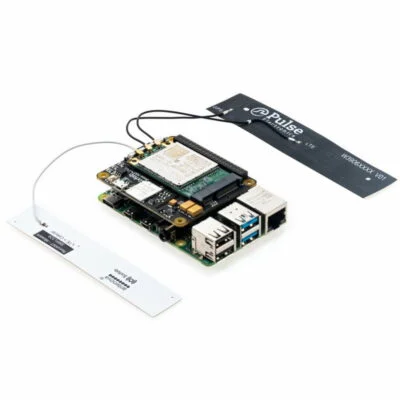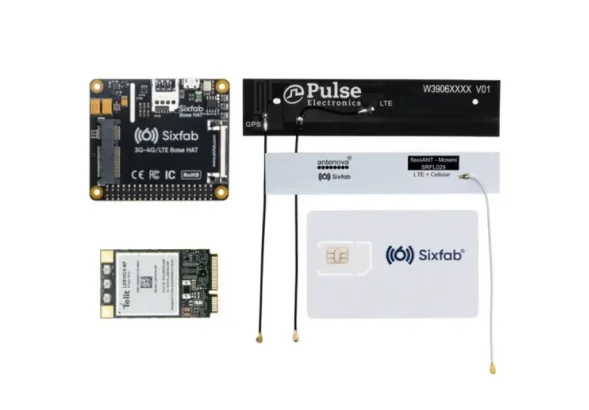Description
Sixfab Cellular IoT Edge Platform
Key Features & Benefits
Tailored for Raspberry Pi: Designed exclusively for Raspberry Pi, the kit offers seamless 4G LTE network integration.
Certified Connectivity: Utilize the pre-certified Sixfab Base HAT for reliable carrier board support.
Effortless Configuration: Sixfab CORE software automates OS and LTE modem setup for simplicity.
Remote Management: Access remote terminal, configuration, and support for network control.
Sixfab IoT SIM: Choose global or regional data plans to suit your project’s needs (pricing details).
Cost-Efficient Start: The kit includes a $25 data credit coupon code; no commitment is required.
All-in-One Kit: With antennas, cables, headers, and spacers, it’s ready to connect right out of the box!
Product Specifications
| Best For | Edge computing projects requiring high speeds |
| Regions | Global or Regional |
| Max. Data Speeds | 150 Mbps (DL) / 50 Mbps (UL) |
| Positioning | GPS, GNSS |
| Electrical | 5V DC, 3.0 A |
| Operating Temp. | -25°C to 70°C |
| Approvals | US: FCC Part 15 Class B CA: ICES-003 Class B EU: CE |
Compliance | RoHS |



Slava –
Amazing kit! Assembled in no time (check raspberrypi official tutorial how to setup your rpi board. I have used model 3, but the tutorial is same for model 4: https://projects.raspberrypi.org/en/projects/raspberry-pi-setting-up), run all commands as described in documentation here: https://docs.sixfab.com/docs/raspberry-pi-3g-4g-lte-base-shield-getting-started using QMI interface. And voila – it works!!! My school dream came true – IOT with NO Borders!!!
I am getting LTE 30/30 Down/Up speed – AMAZING!
Thank you Sixfab for amazing product and clear instructions! Definitely will look for another cool stuff from you!
Best,
Slava
Jude Miller (verified owner) –
Great kit. Simple to assemble but SixFab does not provide the standoffs or screws. It’s the little things that make the difference. I highly recommend their Raspberry Pi 4 hats.
Paul Carpenter –
This is a good little kit and works very well. Two things to note:
1. Use the short, supplied USB cable that comes with the kit. I tried a longer, heavier duty cable and the kernel complained with USB issues. Also, connectivity became intermittent. I tried this with various USB cables (all good quality) and it came down to length.
2. If using Verizon with the LE910C1-NF, be sure to issue an AT+FWSWITCH=2 to enable the Verizon configuration (it is set up for AT&T by default). You just need to do this once as it is stored in the modem.
All in all, a nice kit and I like that it doesn’t interfere with other boards on the RPi stack.